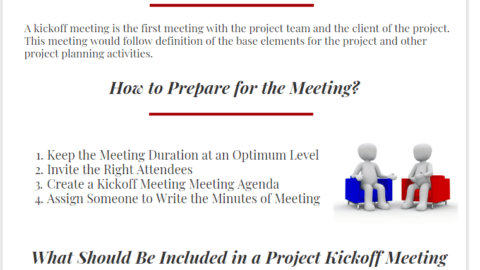5 Tips for How to Become a Better Product Manager
Product managers are widely regarded as critical employees in the business world today. This is due to the product manager’s crucial function in creating and introducing new goods and services to the marketplace. Product managers oversee every stage of a product’s life cycle, from development to marketing to post-launch evaluation. Here are some pointers for improving as a product manager.
Table of Contents
1. If you ask How to Become a Better Product Manager: Get a Bachelor’s Degree
Students can gain a foundation in several fields connected to product management by earning a business degree or a bachelor of science in marketing. Additionally helpful is coursework in statistics, economics, or communication. Prototypes, wireframes, and mockups are frequently created as part of project-based learning, which teaches you how to develop an idea from beginning to end. You can learn to work as a team through group activities where you practice accepting criticism and incorporating ideas from your peers.
2. Consider a Boot Camp
If you’d rather not dedicate yourself to a four-year product management degree, signing up for a product design boot camp is an excellent way to acquire the necessary skills and knowledge required of an effective product manager. Product managers frequently combine product design and management duties because the two professions are closely intertwined.
A boot camp is quick, intense product management training that teaches in-demand skills in a short amount of time. The boot camp participants’ work on projects tied to the industry and mimic real-world experiences, like developing roadmaps and performing market research. Several boot camps span several months and are full-time, immersive experiences. You might want to look into self-paced or part-time programs to finish your boot camp while continuing to work.
3.Acquire Certification
Product management qualifications are not necessary to work in the profession. But they can strengthen your resume by showcasing your dedication to lifelong learning to become a product manager. Product School’s certification program, taught by product managers, includes practical experience, coaching, mock interviews, and resume help. Five days are spent in the full-time intensive course. The part-time program operates on weeknights and weekends for eight weeks. Live and online instruction is used for every class.
4.Acquire Work Experience
In addition to schooling, taking on projects within your present company or organization is one way to get relevant experience. Volunteer to assist in the construction or take the initiative to resolve a specific problem. Seek out opportunities to show off your problem-solving and team-building abilities. After that, you might include these experiences in a project portfolio to show potential companies.
5.Recognize the Market
Ensure you have a solid understanding of the market because it powers the product management machine. However, comprehending the competitive landscape and how your product fits into it is critical. Discover what your rivals are giving and their advantages and disadvantages. Therefore, this will assist you in determining how to place your product in the market and how much to charge for features. It is possible to read analysts’, analytical data opinions and industry reports. You will get a broad picture of the market through this. You can speak with customers and prospects directly to find out what people think of your product and what they want from a solution.
The field of product management is constantly developing and changing. Hence, you must always be learning if you want to be an adequate product manager. Attend conferences, read books, and try out new items. With this effort, you can stay ahead of the curve and produce top-notch work by continually learning. Studying will sharpen your abilities and make it easier for you to advance up the product management ladder.
Additional Tips for How to Become a Better Product Manager:
- Understand your customers: A good product manager understands their customers’ needs, pain points, and wants. And spend time talking to customers, conducting market research, and analyzing data to gain insights into your customers’ behavior.
- Focus on the problem, not the solution: Instead of jumping to solutions, focus on understanding the problem you are trying to solve. Thus, this will help you develop better solutions that address the root cause of the problem.
- Be data-driven: Use data to inform your decisions and measure the success of your products. Firstly, collect and analyze data regularly to identify areas for improvement and make data-driven decisions.
- Communicate effectively: A product manager must be an effective communicator. Hence, communicate product vision, strategy, and progress clearly and regularly to stakeholders and team members. This includes written and verbal communication, as well as visual aids like diagrams and prototypes. In this regard, oroduct managers should communicate their product vision, strategy, and progress clearly and concisely. But, avoid using jargon or technical terms that stakeholders may not understand. And tailor communication to the audience. For example, these may be different divisions of the company, different sub-teams of the same department or also your providers, outsource service providers, freelancers and more. Different stakeholders have different needs and interests. Product managers should tailor their communication to the audience
- Collaborate with cross-functional teams: Product managers work with cross-functional teams, including designers, developers, and marketers. Collaborate with these teams to ensure that everyone is on the same page for product goals and that everyone understands their role in achieving those goals.
- Continually learn and improve: The best product managers are continually learning and improving their skills. Finally, attend industry events, read books and articles, and seek feedback from colleagues and customers to identify areas for growth and improvement.

Brantlee Bhide is a project manager at HB Consultancy. She has 16 years of experience working as a project professional across varying industries, countries, and cultures. She operates in both business and technical domains using an approach that she developed.










